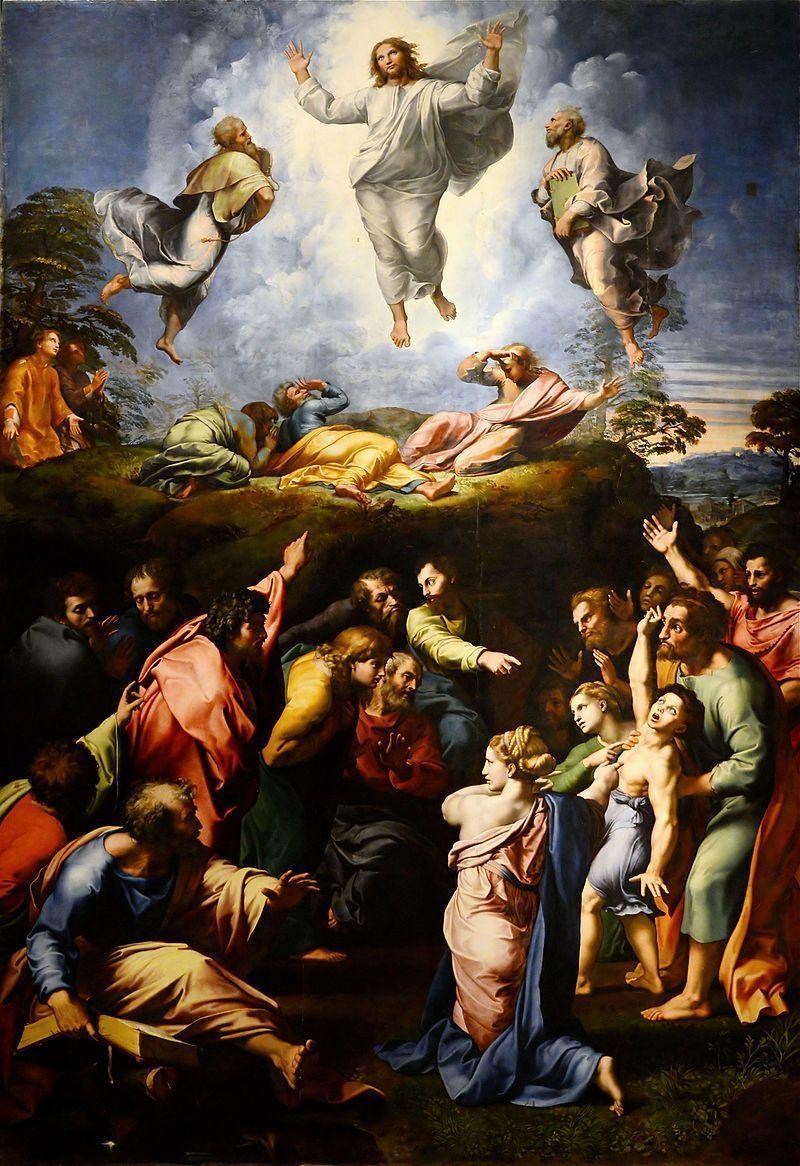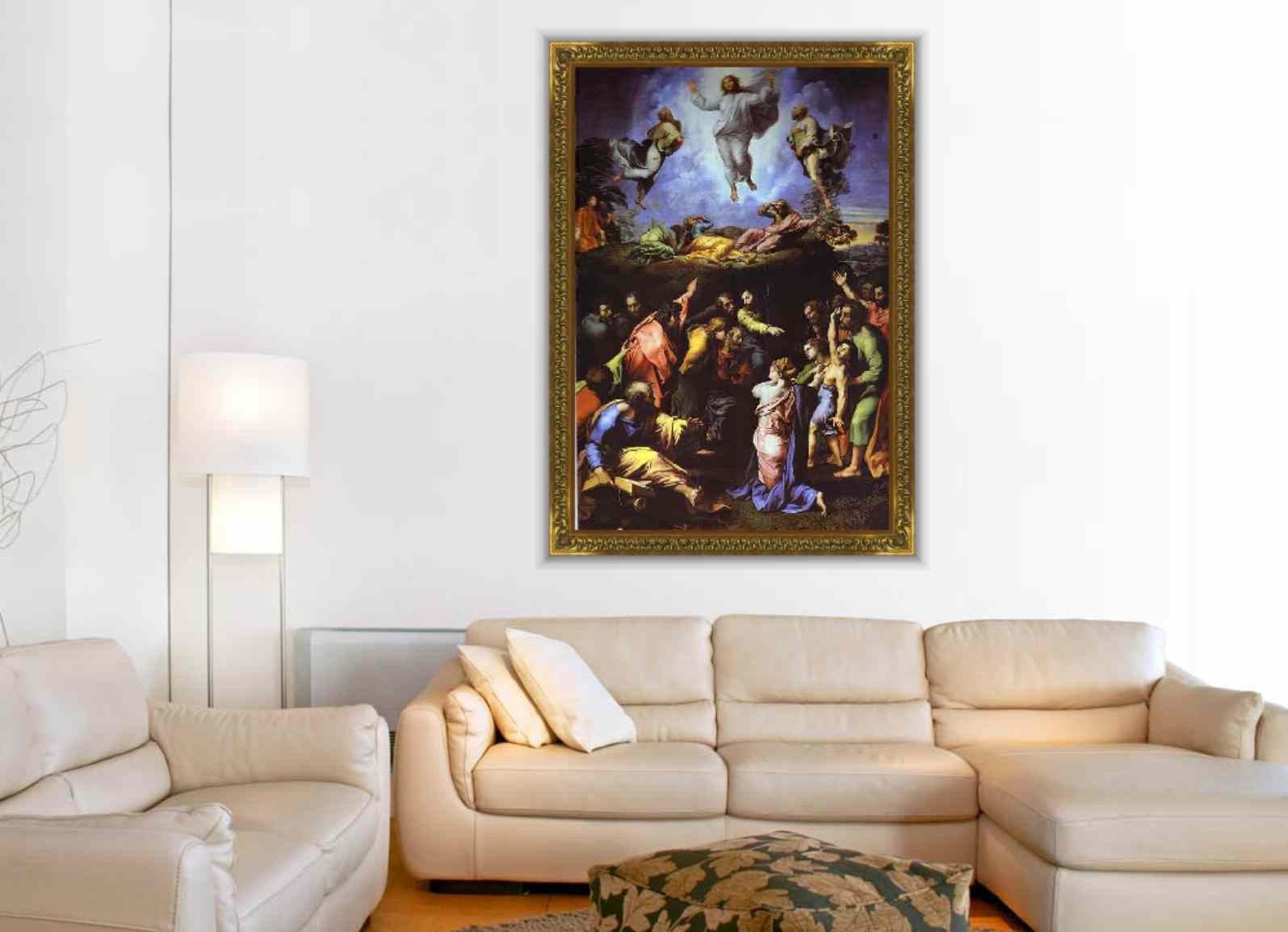Description
The Transfiguration of Raphael It is the final work of the great Renaissance artist Raphael that was commissioned by Cardinal Giulio de' Medici of the Medici banking dynasty.
Originally the work of art was conceived as an altarpiece to be hung as the central altarpiece of Narbonne Cathedral in France and now hangs in the Pinacoteca Vaticana in Vatican City.
After Raphael's death, the painting was never sent to France and the Cardinal hung it instead on the high altar of the church of Blessed Amadeus of San Pietro in Montorio, Rome in 1523.
However, in 1797 the painting was taken by French troops as part of Napoleon's Italian campaign and subsequently hung in the Louvre.
The painting can be seen as reflecting a dichotomy at the simplest level: the redeeming force of Christ, symbolized by the purity and symmetry of the upper half of the painting; unlike the Man's shortcomings, symbolized in the lower half of the painting by the gloomy and chaotic scenes.
This artistic composition is divided into two different parts. The transfiguration is related to successive stories in the Gospel of Matthew. The upper part of the painting depicts Christ elevated in front of billowing, illuminated clouds, and on either side of him are the prophets Elijah and Moses. In the lower part of the painting, the Apostles are depicted, unsuccessfully trying to rid the possessed boy of the demons. The upper part shows the transfigured Christ, who seems to be performing a miracle, curing the child and freeing him from evil.
At the most obvious level, the painting can be interpreted as dividing between the flaws of men, depicted in the lower half, and the redeeming power of Christ, in the upper half of the painting. There are two kneeling figures to the left of Christ who are the martyrs, Saint Agapito and Saint Felicissimus, who were deacons imprisoned during the persecutions of Emperor Valerian.
The dimensions of The Transfiguration are 159 inches by 109 inches. Raphael preferred to paint on canvas, but this painting was done with oil paints on wood as the chosen medium. Raphael actually showed advanced indications of Baroque period mannerism and techniques in this painting.
The stylized, contorted poses of the lower half-figures indicate mannerism. The dramatic tension within these figures, and the liberal use of light and dark, or chiaroscuro contrasts, represent the Baroque period of exaggerated movement to produce drama, tension, exuberance, or illumination. Transfiguration was ahead of its time, just as Raphael's death came too soon.
It would be Raphael's last painting, and he would work on it until his death in April 1520.
Cleaning of the painting from 1972 to 1976 showed that only some of the lower left figures were completed by assistants, while most of the painting was by Raphael himself.



